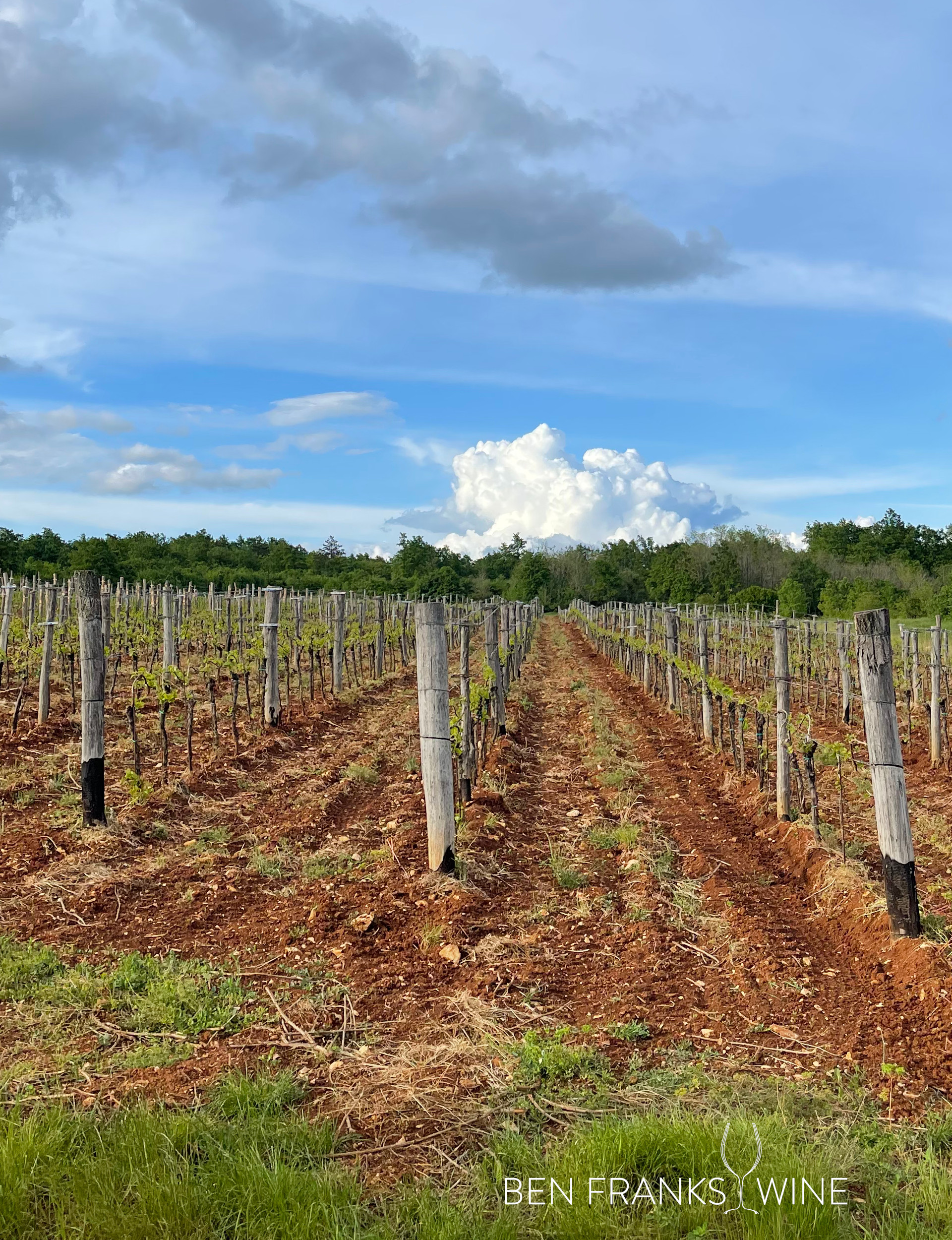Luma Monteiro, a great ambassador for Istrian wines from Croatia’s north-westerly wine region, writes about how the region captured her heart and why wine lovers should be paying attention.
The UK remains a key export target for Istrian wines, helping to form part of the region’s attraction for tourism and a thriving local economy.
Istria, an enchanting wine region in Croatia, has captured my heart. A couple of months ago I had the pleasure of exploring Istria, and I want to share with you my experience of the wines and producers in this extraordinary place.
A fascinating aspect of Istria is its historical connection to Italy, with Italian serving as a second language for many locals, especially the older generation. This cultural fusion is reflected in the wines, where a distinct Istrian identity shines through – a combination of Croatian and Italian.
Istria boasts a rich viticultural heritage, producing wines that showcase indigenous treasures, like the exquisite white Malvasia Istriana and the vibrant red Teran, alongside Bordeaux varietals. While Istria produces wines from international grapes, the true gems are to be found in the indigenous varietals.
Malvasia Istriana, also known as Malvazija Istarska, is a remarkably versatile grape capable of producing a wide range of wines, from young and easy-drinking to rich, age-worthy marvels. Its delightful texture and aging potential never cease to surprise me. It’s important to note that Malvasia Istriana is distinct from other Malvasias you may encounter elsewhere.
On the other hand, Teran finds its true home in Motovun, a hilly area in Northeast Istria. Notable producers like Fakin and Benvenuti shine with their fresh, juicy Teran wines. In fact, they have received accolades in the annual Vinistra competition, with Fakin winning Best Teran and Benvenuti earning recognition for their superb aged Teran.
The Istrian terroir
What sets Istria apart as a “new” wine region is the consistency in the quality of its wines, particularly in the case of Malvasia Istriana. Unlike regions that struggle to establish themselves, Istria impresses with its commitment to producing exceptional wines. This dedication extends to the understanding and communication of terroir, as every producer emphasises the significance of their vineyards’ soils. The terroir of Istria is a fascinating tapestry of distinct soils that greatly influence the character of the wines.
The four main soil types found in different parts of Istria can be divied up like below:
White soil: Limestone soils with Chablis-like characteristics give rise to Malvasias with a flinty, lean profile and a delightful citrusy complexity. Tasting white wines from this soil is a genuine pleasure.
Gray soil: Limestone soils without the same stony composition as the white soil offer the ideal environment for fresh, high-acidity whites made from Malvasia Istriana. Flysch, a type of soil found in Motovun, contributes to the complexity and aging potential of Teran.

Istrian red soils, rich with clay. Photo credit: Luma Monteiro.
Red soil: Rich in iron, clay dominates the red soil, lending a distinctive terracotta color. This soil produces outstanding Teran wines and bold, full-bodied whites from Malvasia Istriana.
Black soil: The rarest soil type in Istria, Black soil is rich in iron and boasts a remarkable terroir for Malvasia. Wines grown in this soil offer complexity and a hint of smokiness that wine enthusiasts should not miss.
Among the many remarkable producers in Istria, Cattunar stands out. They offer a limited edition wine that highlights the influence of four different soils on Malvasia Istriana, providing an opportunity to explore the terroir’s nuances.
What I’d be drinking
During my journey through Istria, I encountered several outstanding producers and wines that left a lasting impression. Here are a few recommendations:
Kozlovic Selekcija Malvazija is a step up from Kozlovic’s entry-level Malvasia. This wine offers excellent value. Concentrated fruit flavors and a true expression of terroir make this Malvasia Istriana a brilliant choice. However, I must confess that I fell in love with most of Kozlovic’s wines, so be sure to try them all.

Kozlovic winery’s exterior. Photo credit: Luma Monteiro.
One of the “founding fathers” of Istrian wines, Matosevic crafts a pure, lean white in their Matosevic Alba Malvazija Istarska wine; it’s bursting with delightful flavours and a pleasing texture. This label truly embodies the region’s terroir and showcases the winemaker’s expertise.
An exceptional and rare wine, Cattunar 4 Terre Malvazija Istarska Black Soil Premium Sur Lie is a Malvasia Istriana from Black soil exhibits intriguing complexity, with pronounced notes of bay leaves, peach, and white nectarines, culminating in a lovely citrusy finish. It’s an impressive wine that demands attention.
Additionally, I want to highlight a unique skin contact wine: Cattunar 4 Terre Nono Malvazija Istarska. This wine is a testament to complexity and craftsmanship, having undergone eight months of cold fermentation on the skins without oxygen contact. With its intricate flavors, delightful texture, and fresh citrusy notes complemented by exotic fruit and dried herbs on the finish, this is a serious wine for those seeking complexity.
Croatian wines in the UK market
The director of Vinistra, Ivan Maric, emphasizes the importance of the UK market and its role in promoting Istria as a whole. While Istria continues to attract visitors with its exceptional wines, the focus is also on showcasing the region’s diverse culinary and culturual delights, including the coveted white truffles, award-winning olive oils, and the breathtaking vistas overlooking the Adriatic Sea. The future of Istrian wines looks promising, with a growing reputation that will undoubtedly captivate wine enthusiasts around the world.
Istria, Croatia, is unquestionably a rising star in the wine world. Its commitment to producing consistent, high-quality wines, the unique terroir that influences their character, and the dedication of exceptional producers like Kozlovic, Matosevic, and Cattunar contribute to its growing reputation. As distributors and importers explore new frontiers, they should keep a close eye on the remarkable wines emerging from this captivating region. Istria has truly become a must-visit destination for wine lovers, offering a bright future filled with exciting possibilities.
~~
Have you tried Istrian wines yet? If so, which stood out for you and why? Let us know in the comments below.






